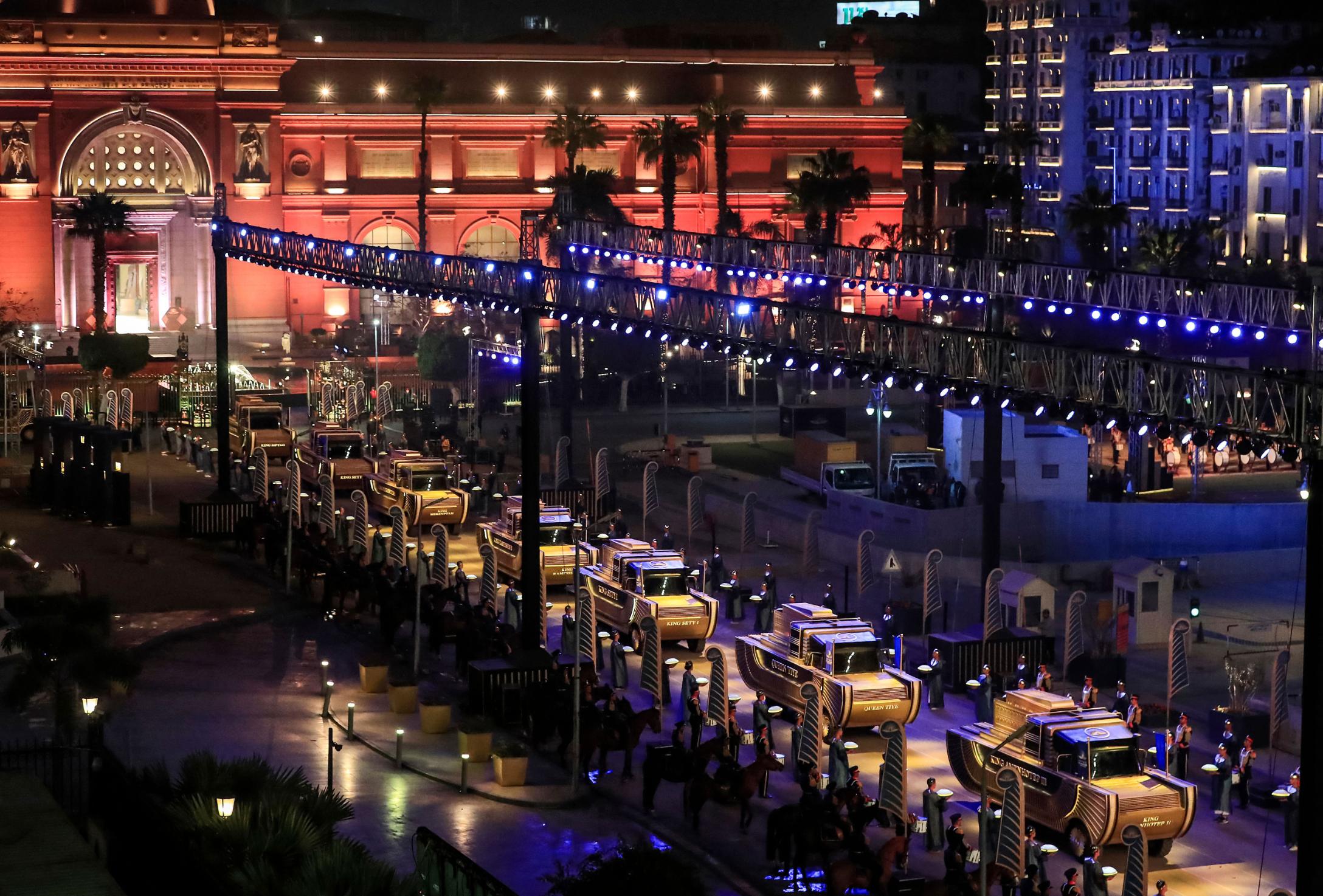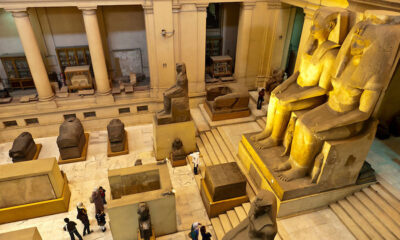Egypt
How Egyptians Prepped Pharaohs for Golden Parade?!

By Mohamed Abdelhakim
The Egyptians dazzled the world with the awe-inspiring PharaohGolden Parade of twenty-two royal mummies of ancient Egypt’s kings and queens from their old headquarters in the Egyptian Museum in Tahrir to their new headquarters in the National Museum of Egyptian Civilization in Fustat, Cairo, Egypt.
Before the legendary ceremony and the transfer of the royal mummies to the museum, a group of museum workers devised a meticulous plan for dealing with their great ancestors’ mummies and belongings. The mummies were displayed to the public on April 18, 2021, in the Pharaoh’s Golden Parade, which coincided with World Heritage Day, after a two-week preparation period. It goes without saying that there are many stages to prep royalty for a parade, let alone a Pharaoh, so how were those royal mummies prepped for the big day?!
Getting Up-Close with the Pharaoh
The first stage of the mummies’ journey began inside the museum, in the reception and virtual examination laboratories, where a specialized team prepared a report detailing the condition of each mummy individually prior to the transfer process. It should be noted that each mummy is accompanied by a detailed report that includes the name of each king or queen and information about the method of preserving and transporting the mummy, as well as the condition of each one in terms of preservation quality, previous restoration operations, strengths and weaknesses, and broken parts, as revealed by CT scan results.
DNA samples are taken from all of the mummies in order to track and know the lineages of kings and queens and compare them to what is proven or assumed historically. It is important to note that these samples taken from the mummies cause no damage to them, do not distort them, and do not change their shape or appearance. Using a high-precision technique, the sample is taken from the remains around the mummy’s body or from any part that is not visible.
The Pharaoh Gets Reconstructive Work Done
The mummy is either preserved or stored in nitrogen-powered preservation units until it is placed in the exhibition hall, or it is directed to the Mummy Restoration Laboratory if there is a need for intervention, such as an insect pest or infection with a fungal or bacterial microbe that may lead to the mummy’s decomposition or cause damage to it.
Accessorize – duh!!
The next concern is the extent of care for the sarcophagus and each mummy’s belongings, receiving great attention and treatment, no less important than the treatment that occurred with the mummies themselves in terms of documentation, examination, and restoration of the unique texts, symbols, and colors contained in those coffins, in preparation for displaying them alongside the mummies.
Don’t Forget the Royal Ride – Golden of Course!!
Finally, it was the stage of preparing display showcases for mummies or coffins, which were equipped with temperature and humidity measurement units and dedicated lighting systems that would not affect the exhibits.
All of the above, however, is just a small sample of what went on behind the scenes of this global event, highlighting the Egyptians’ reverence for their forefathers who shaped history and who are the source of their pride in their distinct Egyptian identity.


